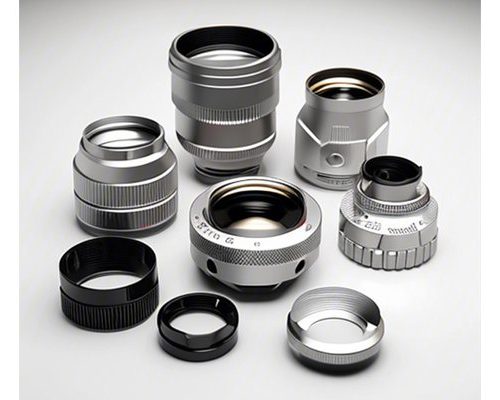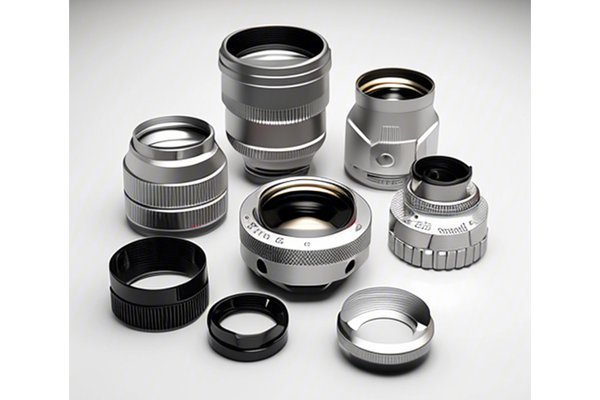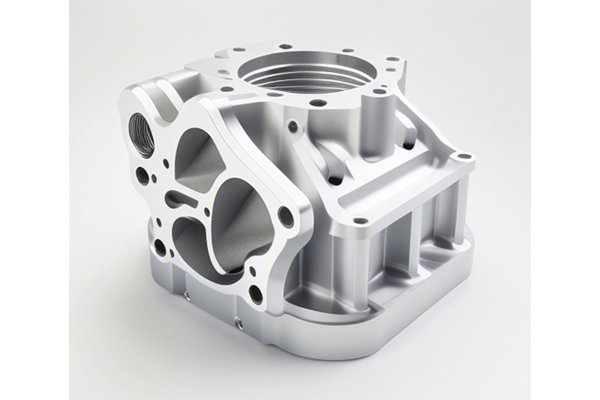—
Opening Remarks
Imagine standing in a world where every component of your product is finely crafted to perfection. That’s the magic of aluminum CNC machining, a process that marries advanced technology with artistry to produce intricate parts with unparalleled precision. In today’s fast-paced manufacturing landscape, the need for accuracy and efficiency isn’t just a bonus; it’s essential. This article will dive deep into the realm of aluminum CNC machining, exploring how it transforms industries, enhances product quality, and ultimately revolutionizes the manufacturing process.
Grab a cozy seat and let’s journey together through the fascinating world of CNC machining!
—
What Exactly is Aluminum CNC Machining?
At its core, aluminum CNC (Computer Numerical Control) machining is a process that uses computer-controlled machines to remove material from a solid block of aluminum, creating parts that are detailed and precise. Think of it as sculpting, but instead of a chisel and hammer, we have cutting tools and computers guiding the entire operation. This blend of technology and craftsmanship leads to parts made with uncanny accuracy, often reaching tolerances within a fraction of a millimeter.
But why aluminum? This lightweight metal isn’t just a pretty face; it boasts excellent machinability, corrosion resistance, and a fantastic strength-to-weight ratio. When combined with CNC technology, aluminum becomes a dream come true for engineers and manufacturers alike, fostering innovation and creativity across various industries.
—
How Does CNC Machining Work? A Step-by-Step Guide
Now that we’ve got a handle on what aluminum CNC machining is, let’s break down how this intricate process works. Here’s a simple step-by-step rundown:
Isn’t it incredible how technology and the human touch work hand in hand to create such precision?
—
Advantages of Aluminum CNC Machining
Let’s face it; in any industry, we’re always on the lookout for ways to improve efficiency and minimize errors. So, what are the real benefits of aluminum CNC machining? Here are some standout points:
Precision and Accuracy
CNC machining operates with unbelievable precision. The machines can follow complex designs with minimal deviation. Engineers can create parts that fit together perfectly, which is crucial in industries like aerospace and medical devices.
Consistency
Once a design is programmed into the CNC machine, it can reproduce that item countless times, maintaining the same high level of quality with each piece produced. This consistency is the golden ticket in large production runs where quality must never waver.
Flexibility in Design
The wonders of CNC technology mean that virtually any design can be machined. Whether you need a simple bracket or a complex engine component, CNC machining makes it possible to manufacture a wide range of parts without significant modifications to the setup.
Reduced Waste
With precise cutting techniques, CNC machining minimizes material waste, optimizing costs and contributing positively to environmental concerns. It’s like sculpting a masterpiece from a block without shaving off unnecessary excess.
Faster Production Times
Thanks to automation, parts can be produced significantly faster than traditional machining methods. This speed can be a game-changer when quick turnarounds are required.
—
Industries Benefiting from Aluminum CNC Machining
So, who’s harnessing the power of aluminum CNC machining? Here are a few key industries that are reaping the rewards:
Aerospace and Defense
In aerospace, every gram matters. Components made from aluminum through CNC machining are lightweight yet durable, providing essential performance and safety for aircraft. Precision is critical here, as even the smallest error can lead to catastrophic consequences.
Automotive Manufacturing
CNC machining optimizes the production of components from engine parts to intricate interiors. Fast production times paired with high-quality output contribute to faster time-to-market for new vehicles.

Medical Devices
From surgical tools to implantable devices, the medical field demands precision and reliability. CNC machining allows for the creation of detailed prototypes and final products meeting stringent regulatory standards.
Electronics
As devices become smaller and more intricate, CNC machining delivers the precision needed for housing and structural components in technology. Think of your smartphone or the delicate internals of a laptop—aluminum parts crafted with precision are essential here.
Prototyping and Custom Parts
For businesses that need rapid prototyping, aluminum CNC machining is a win-win. Designers can test their ideas quickly and make necessary adjustments without the long lead times associated with traditional methods.
—
Challenges in Aluminum CNC Machining
While CNC machining boasts numerous advantages, it’s not without its challenges. Let’s examine some of the hurdles faced in the industry:
Initial Costs
Investing in a CNC machine can require significant capital, especially for high-quality equipment capable of precise aluminum machining. However, the long-term benefits often outweigh these initial expenses.
Skill Requirements
While technology handles much of the work, CNC machinists still require specialized training to operate machines and troubleshoot issues. Finding skilled workers can be a challenge, especially in regions where educational programs for machining are limited.
Material Limitations
Although aluminum is superb for machining, it doesn’t suit every application. There are times when stronger or more heat-resistant materials are necessary. In such cases, understanding material properties is key.
Machine Maintenance
Routine maintenance is crucial for ensuring that CNC machines function effectively and produce quality parts. Neglecting this can lead to costly repairs and downtime.
—
The Future of Aluminum CNC Machining: Trends and Innovations
As technology continues to evolve, so does aluminum CNC machining. Here are some exciting trends you should keep an eye on:
Advanced Software Solutions
Software innovations enhance simulation, allowing for better design testing before machining. This means fewer errors and faster design iterations.
Integration with IoT
The Internet of Things (IoT) is starting to play a role in CNC machining. Machines integrated with IoT can communicate their status, improving maintenance and reducing downtime.
Sustainable Practices
With a growing emphasis on sustainability, companies are opting for processes that reduce waste and energy consumption, aligning machining practices with eco-friendly missions.
Hybrid Machining Technologies
These technologies combine additive and subtractive manufacturing, paving the way for even more intricate designs and capabilities.
—
Final Thoughts: Embracing the CNC Machining Revolution
As we wrap up our journey through the fascinating world of aluminum CNC machining, it’s clear that this technology is not just a trend—it’s a revolution. Whether you’re designing a new product or optimizing existing ones, understanding the nuances of CNC machining can unlock a world of possibilities.
As industries continue to evolve, embracing cutting-edge technologies like CNC machining is vital. If you’re considering incorporating CNC machining into your manufacturing processes, remember: it’s not just about the tools; it’s about the innovative thinking that drives the process.
So, are you ready to harness the power of aluminum CNC machining in your projects? The future is bright, and opportunity is just a precision cut away!
—



